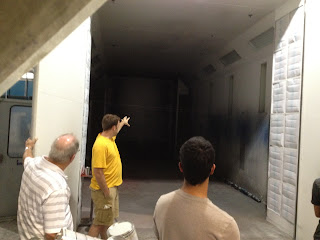This documentary follows companies like Ford Motor Company and Nike, as they are coming to be one of the leading contributors of waste in todays world. Ford Motor Company has had tremendous issues concerning hazardous waste, where Nikes' shoes over time have become a stockpile of old shoes.
As we progress, we learn about the various ways that Braungart and McDonough have implemented green technology, or at least "green thinking" in the worlds of mass production. For instance, one of Fords manufacturing facilities had been redesigned, making the entire plant area green and sustainable. There was also a great deal of focus on the employees of the plant, encouraging higher morale of its workers. Nike's fundamentals had been examined, and new ideas for green materials and recycling strategies have enabled the company itself to be more sustainable.
Although these areas of the marketplace are gaining acknowledgment for their interests in becoming a green company, the philosophy as a whole is not on the scale it needs to be. Although implementing green technologies into a pre-existing company can be tremendously expensive, the overall expected benefits significantly outweigh the costs.
Ford Motor Company's Green Roof

























